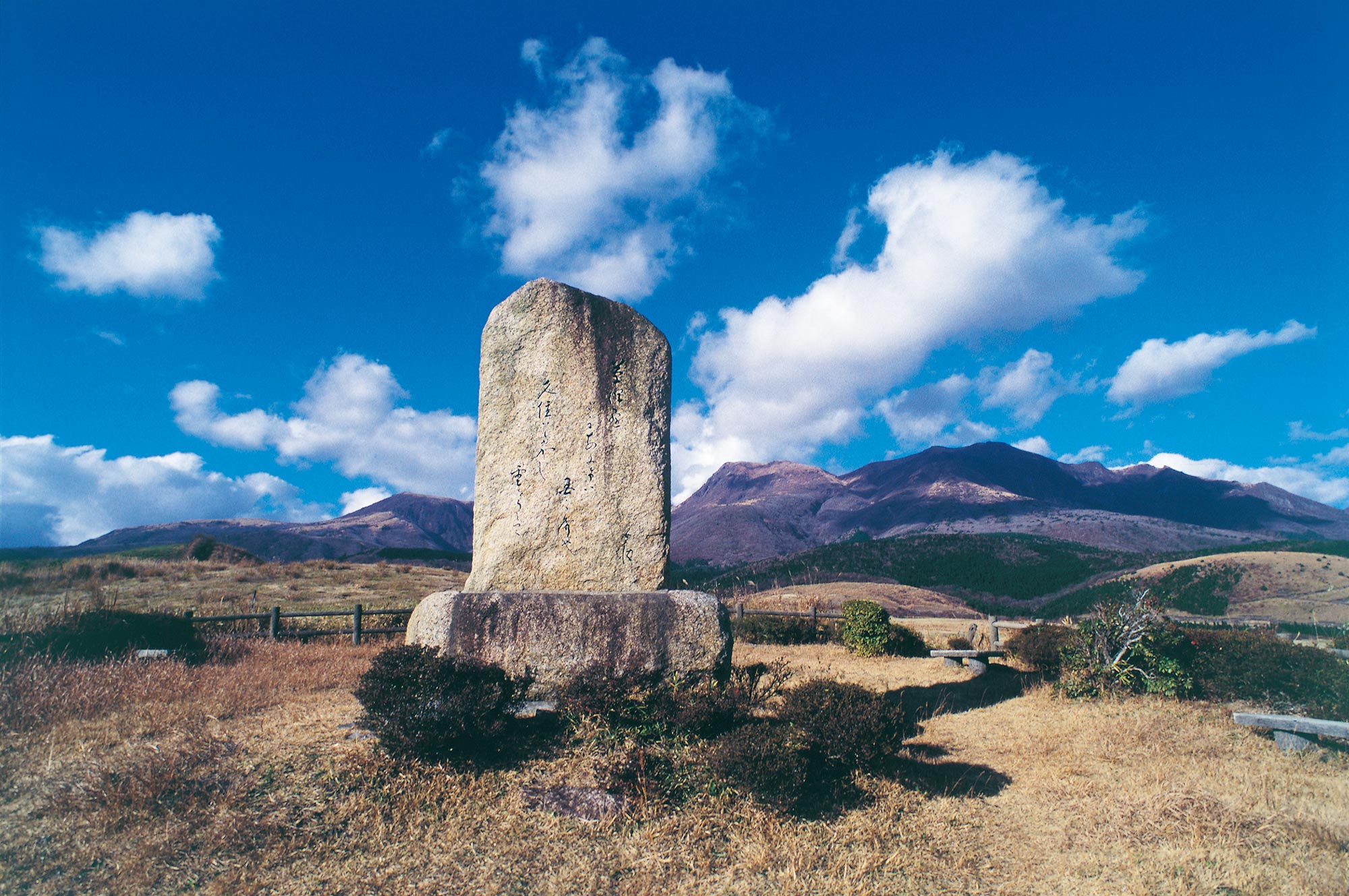

- Houhi Area
- Nature
Kuju Highland
Photography/ISHIMATSU Takeo
the Vibrant Expression of the Four Seasons
When the Japanese pampas grass waving in the wind starts to glow in silvery color, the autumn in the highland deepens quickly, and with changing colors of the leaves in the mountains and valley, soon winter hurries its way here. Just as the lush greens bring summer after the burning of the dead grass in spring, the transition of the four seasons in Kuju highland is so vividly portrayed.
”Looking at the deep grass field here, it is the great viewpoint of the province. Kuju highland creates clouds high up in the sky.” In the middle of the highland stands the monument with a tanka poem of Hakushu Kitahara. Just below it is the monument with a poem of Sohou Tokutomi.
There are so many literary monuments on the highland, coming from Nagayu Onsen through the prairie to Senomoto. From the old days of Manyou-shu (poem collection) to San’yo Rai’s “Mount Kuju” then into the modern days, there are countless people who created poems and paintings to praise the stunning mountains and highland.
Tekkan Yosano looked up in the mountains and said, “My heart is attracted to mountains of Kuju, as if I am approaching a great master,” and his wife Akiko looked down the grassland and said “The outside of the valley bordering the Kuju and Aso mountains spreads a pleasant field that continues without a wall.”
Just as the poem by Akiko Yosano, the vast highland literally expands across the field. Once I happened to guide a Sherpa from Nepal. He asked to get off the car in the middle of the highland, looking at the grassland for a while. Then he said, with a drop of tear in his eyes, “The Himalayas of the icy snow and rocks are the sacred seating provided for gods, but this lush green is also a true treasure of the world.”
The gentle wave of grass fields with the elevation of 600 to 1,000 meters is the largest in Kyushu, and one of the largest plateaus in Japan. As Ujou Noguchi says, “The mountain is covered with the clouds, and the vast field seems to continue forever, I cannot tell where the end of Kuju is.” At the end of Kuju, Mount Aso is fuming up in the sky, and Sobo Katamuki mountain range forms wave.
Of course, the highland is not just for people who visit. Since the prehistoric times to the present, it has been a place of the lives of people. People have been working here for thousands of years, cutting grass, raising cows and horses, producing upland vegetables, or sometimes going hunting for wild birds and beasts. They admired the mountains, dissolved in the meadows, and lived with nature.
However, the environment here is gentle yet harsh. Although it is cool in the summer, the freezing cold air swirls around in the winter. People here endure the cold and wait for the coming season.

Kuju Highland with Japanese pampas grass swaying.

